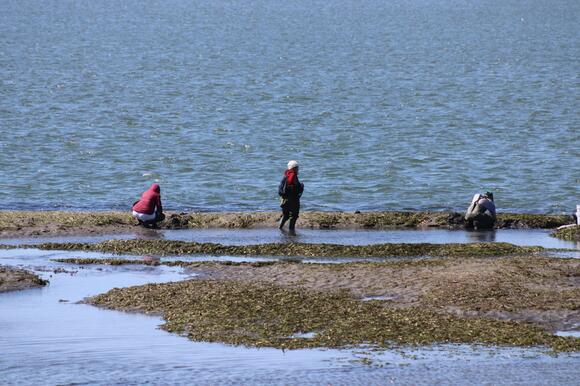
For nearly a month, the harvesting of shellfish on the Oregon coast has slowed to a crawl as mussels, clams and oysters have been inundated with toxins that cause paralytic shellfish poisoning in humans. The outbreak occurred exceptionally quickly, striking at least 31 people ill, including several who were admitted to the hospital, and at least one who was put on a ventilator.
Matthew Hunter, shellfish program leader at the Oregon Department of Fish and Wildlife (ODFW), said that the outbreak had occurred at a pace and on a scale that had never been recorded in Oregon before.
Paralytic shellfish poisoning is caused by saxitoxins or domoic acid produced in algal blooms by phytoplankton, with a genus known as alexandrium responsible for the most recent outbreak. Those phytoplankton produce saxitoxin and are always present in algal blooms, but Hunter said that shifting wind, solar and nutritional conditions cause overstimulation and increased activity, leading to spikes in their prevalence.
In turn, the phytoplankton are ingested by filter feeders such as mussels, clams and oysters, which are not impacted by the toxin but accumulate it in their flesh. Then, when a human consumes the impacted shellfish, they are unable to process the toxin and become ill.
Hunter said that symptoms start within an hour of ingesting affected seafood and can start with tingling in extremities, stomach cramps, vomiting or diarrhea and extend to stroke-like symptoms or inability to breathe, depending on the volume of toxin ingested. There is no treatment for the condition, but those who are affected should go to a hospital for monitoring.
The current outbreak at the Oregon coast began in late May, with the first warning coming when six people fell sick shortly after consuming shellfish on the Sunday before Memorial Day.
Officials from ODFW conduct regular testing of mussels and razor clams on the coast for both saxitoxin and domoic acid, but Hunter said that the speed at which levels increased outpaced the testing. Samples are colleted every ten days when tides are low and transported to a lab in Wilsonville, where it takes about five days tor results to become available.
However, in the current outbreak, Hunter said that levels of saxitoxin detected in mussels at Cape Meares were 75 times higher in mussels given to the department by one of the people who fell ill than in those gathered five days before by department staff from the same rock. Hunter said that this meant the bloom had occurred so quickly and with such intensity that the increase in saxitoxin on each day would have been sufficient to cause sickness.
After receiving word of the outbreak, department staff sprang into action, dispersing across the coast to gather samples from various species of shellfish.
This temporarily led to the closure of harvesting for mussels, bay and razor clams, and oysters on the entire coast. Hunter said that such outbreaks usually did not impact razor clams, but that with the larger number of people harvesting and consuming them compared to mussels, slightly elevated levels of saxitoxin had led ODFW to close their harvest out of an abundance of caution.
Results from a second round of sampling after the outbreak began were released on June 13 and showed that saxitoxin levels had dropped in all species across the coast. The drop gave ODFW officials confidence to reopen razor clam harvesting on the coast from Yachats to the Washington state line and oyster harvesting in Tillamook and Netarts Bays, though all other shellfish harvesting remains closed.
Hunter said that the level of saxitoxin in this outbreak was the highest ever recorded by ODFW and that the scope and complexity of the impacts has been “unprecedented.”
A new set of samples was gathered over the weekend and test results will be released later this week.
Hunter said he was hopeful that the lower levels in the most recent results indicated that the phytoplankton activity in the fungal bloom had died down but cautioned that the situation could recur if conditions shifted. Hunter noted that the department has a program to monitor saxitoxin levels in coastal waters but said that the position overseeing it had been vacant since shortly before the outbreak.
Hunter also said that even as the phytoplankton’s activity subsided, it would take time for the shellfish to process and expel the saxitoxins. Hunter explained that the department’s monitoring program relied on homogenized studies that sampled more than 20 individual shellfish per site and that safety thresholds were set at one tenth of the level of saxitoxins that would trigger illness.
Given the multiple layers of complexity, Hunter said that he could not hazard a guess as to when the fisheries would reopen. He said that the next round of sample results had been collected over the weekend and will be released later this week.
For the latest information please visit the ODFW's website or call the shellfish hotline at (800) 448-2474.
 Most Popular
Most Popular

Comments / 0